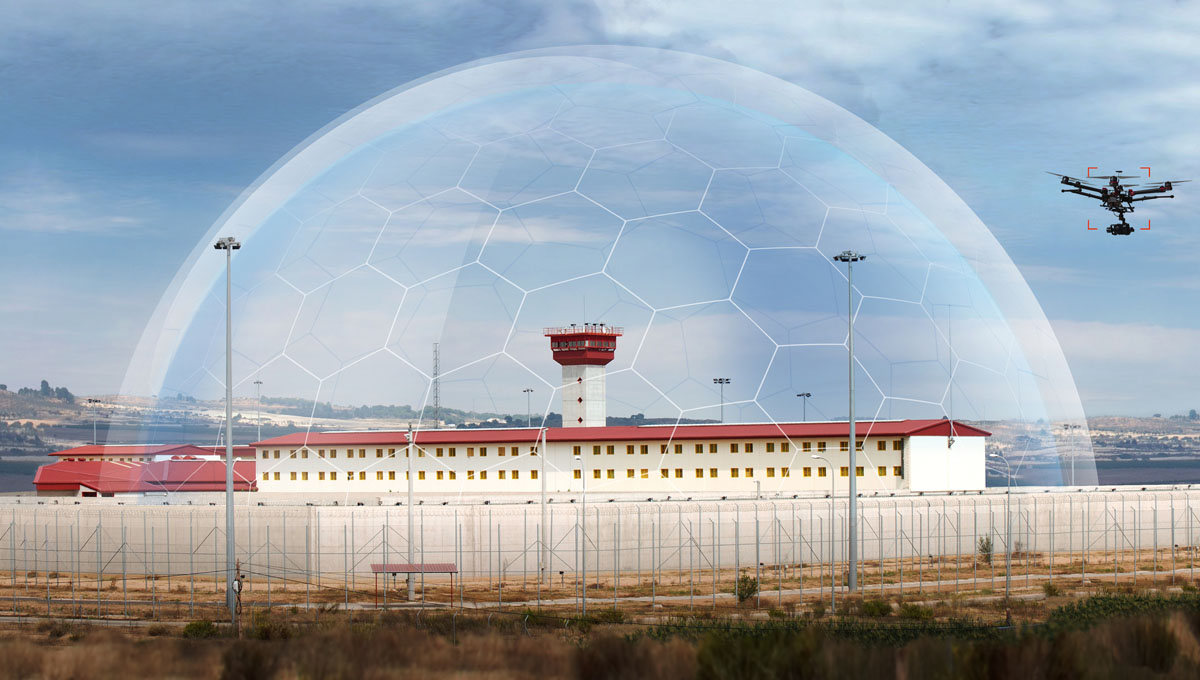Although drones have been a welcoming addition for many different industries, they have also created problematic outcomes in various situations. During the past year, there have been some major events in the counter-drone space, such as the Gatwick airport shutdown in December 2018, the incident at Boston’s Fenway Park in April 2019, or over correctional facilities and disrupting first responders at wildfires and during rescue operations. To combat this, Dedrone, a San-Francisco-based company, is using advanced hardware and software technology to create a critical awareness of the airspace.
DroneTracker, the company’s complete, automatic drone detection and security solution, provides organizations with a way to quickly assess airspace activity, protect assets, and neutralize the threat. To assess airspace activity, DroneTracker relies on hardware, such as RF sensors, cameras, microphones, and radar, to collect the needed data. Since 2014, Dedrone has been very active in the security space against drone threats.In 2018, the company won the “Game of Drones” competition, and also published data and research outcomes from its customer’s installations. That includes the 2018 Airport Airspace Security Report and Corrections Airspace Security Report, which showcase how the technology works. For example, in the 2018 Airport Airspace Security Report, drone activity was monitored at four locations for a total of 148 days, and 285 drones were detected.Additionally, Dedrone partnered with AT&T, to create smart city IoT/drone detection solutions, and is actively working with military organizations, including the US Department of Defense through DIU (Defense Innovation Unit). In February 2019, the company introduced Dedrone Cloud, to streamline and accelerate drone detection technology installations, and launched a new RF sensor, the RF-300, to automatically locate drones.“As our customer base grows, so does our understanding of unauthorized drone activity around the world”, said Dedrone VP of Marketing, Pablo Estrada. “We’ve been able to set a baseline of data with our customers by diagnosing their airspace activity and then working with them to advance their counter-drone programs to tailor to their needs. For example, a state department of corrections has been able to leverage the data they’ve collected to not only adjust their internal security programs but also share that data with state legislators to demonstrate their current needs to protect themselves against drone threats.”More recently, the release of DroneTracker 4 introduced significant enhancements for customers including: drone flight pattern recognition, to help uncover patterns in drone activity in the airspace, enabling users to better understand the intention of the drone flight and the potential impacts of the incursion; heatmaps, which create visual cues providing a quick overview of unauthorized drone activity in a broad area and indicate locations of interest and hot spots to investigate further or invest additional resources; and scheduled reports, to provide stakeholders with a modernized framework to compare data and assess their airspace activity patterns.“We developed DroneTracker 4 for our customers to maximize how they interact with detection data and help them create intelligent airspace security protocols,” shares Joerg Lamprecht, CEO and co-founder of Dedrone. “DroneTracker 4 helps security providers understand what the drone pilots are after and take strategic precautions to protect their operations.”One year ago, Estrada explained the importance of thinking and using passive countermeasures, instead of active ones (mainly due to legal issues), to create defenses against unauthorized drone activity. Now, we connected with him again, to understand if there have been important changes in laws and regulations that could have shifted the way companies and individuals defend themselves.“Active defeat systems still remain highly restricted”, Estrada explained. “Since our last conversation, the U.S. saw the passage of Preventing Emerging Threats Act of 2018. This act enables agencies at Department of Homeland Security and Department of Justice to have the authority to acquire and use counter-drone equipment to detect, identify, track and interdict unauthorized drones, addressing a key security risk accompanying the massive expansion in U.S. drone usage. Although laws are changing, first responders, corporations, airports, stadiums and public events must continue to rely on passive counter measures. In all cases, whether the response to an incursion is to defeat or defend, it has become clear that early detection of drone activity is the critical foundation of any counter-drone program.”In the future. Dedrone wants to continue to expand its team to advance service offerings, including developing new products, advancing the DroneDNA database, and developing new industry partnerships. The company is also focused on providing services to correctional facilities, defense, and national security operations, public safety officers and airports.Subscribe
The information you submit will be stored and used to communicate with you about your interest in Commercial UAV News. To understand more about how we use and store information, please refer to our privacy policy.
May 6, 2019
Tailoring Counter-drone Programs to Fit Specific Security Needs
















Comments